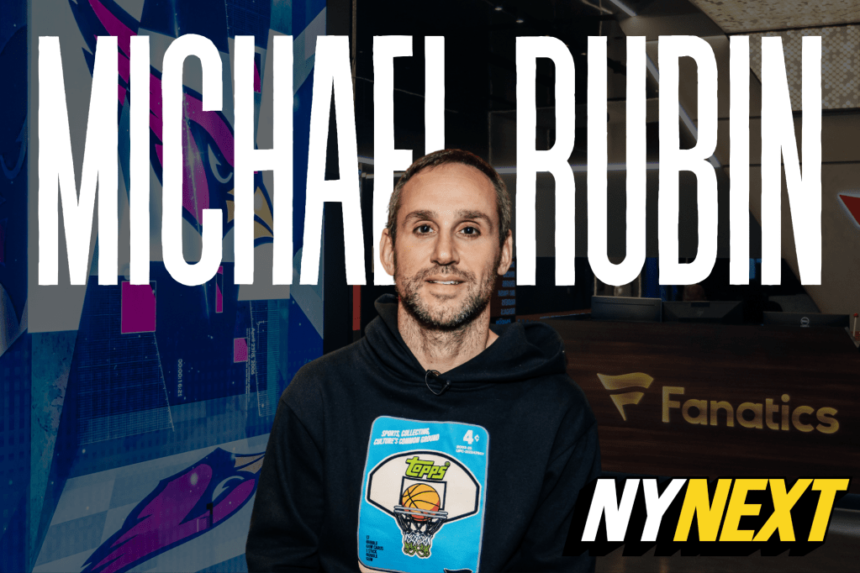Fanatics Fest is gearing up for another exciting year, despite expectations of losing millions once again. CEO Michael Rubin remains unfazed, emphasizing that the event is still in its investment phase. Last year, the inaugural festival drew 72,000 fans and was considered a massive success, even though it incurred a $15 million loss. However, this financial setback is minimal compared to Fanatics’ projected $12 billion revenue in 2026.
The three-day sports and culture convention, set to take place at the Javits Center from June 20 to 22, is not primarily aimed at generating revenue but rather at enhancing Fanatics’ other verticals like commerce and betting. Rubin views Fanatics Fest as a unique opportunity to connect fans with the world of sports in a way that only Fanatics can.
This year’s fest is expected to attract 150,000 attendees, with an impressive lineup of participating leagues and organizations. Notable figures like Jay-Z, Tom Brady, and Kevin Hart are set to make appearances, alongside a host of other athletes and entertainers. The event promises a blend of athlete appearances, live content, fan competitions, brand activations, and surprise stunts, all designed to bring fans closer to the sports culture they love.
Rubin is tight-lipped about specific event details but hints at “crazy stunts” and surprises that will keep attendees on their toes. Despite the success of last year’s event, he acknowledges areas for improvement, particularly in VIP experiences and crowd logistics. Rubin is committed to enhancing the overall fan experience at Fanatics Fest 2.0.
Since its inception in 2002, Fanatics has grown from a licensed merchandise seller to a powerhouse in sports commerce, including trading cards, collectibles, and a sportsbook. With over 10 million customers annually and more than 40 million online orders shipped each year, Fanatics has established a direct and multi-channel relationship with fans worldwide.
Rubin’s vision for Fanatics Fest was inspired by flagship experiences like SXSW and Comic-Con, leading him to create a sports-focused event that brings together various sports properties and athletes in one place. The event aims to provide fans with a unique and immersive experience that celebrates the culture of sports.
As preparations for Fanatics Fest continue, fans can expect an unforgettable weekend filled with celebrity appearances, engaging activities, and exciting surprises. Stay tuned for more updates on this one-of-a-kind sports and culture convention. The world of fashion is constantly evolving, with new trends emerging every season. One trend that has been gaining popularity in recent years is sustainable fashion. This movement focuses on creating clothing and accessories in an environmentally and socially responsible way.
Sustainable fashion is all about minimizing the environmental impact of the fashion industry by using eco-friendly materials, reducing waste, and promoting fair labor practices. This means using organic and recycled materials, cutting down on water and energy consumption during production, and ensuring that workers are paid fair wages and work in safe conditions.
There are many ways in which fashion brands can incorporate sustainability into their designs. One popular method is to use organic materials such as organic cotton, hemp, and bamboo. These materials are grown without the use of harmful chemicals and pesticides, making them better for the environment and the people who work with them.
Another way to promote sustainability in fashion is to recycle materials. Many brands are now using recycled fabrics and materials in their designs, giving new life to old clothing and reducing waste. This not only helps to reduce the amount of clothing that ends up in landfills but also helps to conserve resources and reduce the carbon footprint of the fashion industry.
In addition to using eco-friendly materials, sustainable fashion also involves reducing waste in the production process. This can be achieved by designing clothing that is made to last, rather than being disposable, and by using techniques such as zero-waste pattern cutting to minimize fabric waste.
Promoting fair labor practices is also an important aspect of sustainable fashion. This means ensuring that workers are paid fair wages, have safe working conditions, and are treated with respect. Brands that prioritize fair labor practices are not only supporting their workers but also helping to create a more sustainable and ethical fashion industry.
There are many brands that are leading the way in sustainable fashion, from large companies to small independent designers. These brands are proving that fashion can be both stylish and sustainable, and that consumers don’t have to sacrifice style for ethics.
As consumers become more aware of the environmental and social impact of the fashion industry, there is a growing demand for sustainable fashion. By supporting brands that prioritize sustainability, consumers can help to create a more ethical and environmentally friendly fashion industry.
In conclusion, sustainable fashion is not just a passing trend – it is a movement that is here to stay. By choosing to support brands that prioritize sustainability, consumers can make a positive impact on the environment and support fair labor practices in the fashion industry. Together, we can create a more sustainable and ethical fashion industry for future generations to enjoy.








